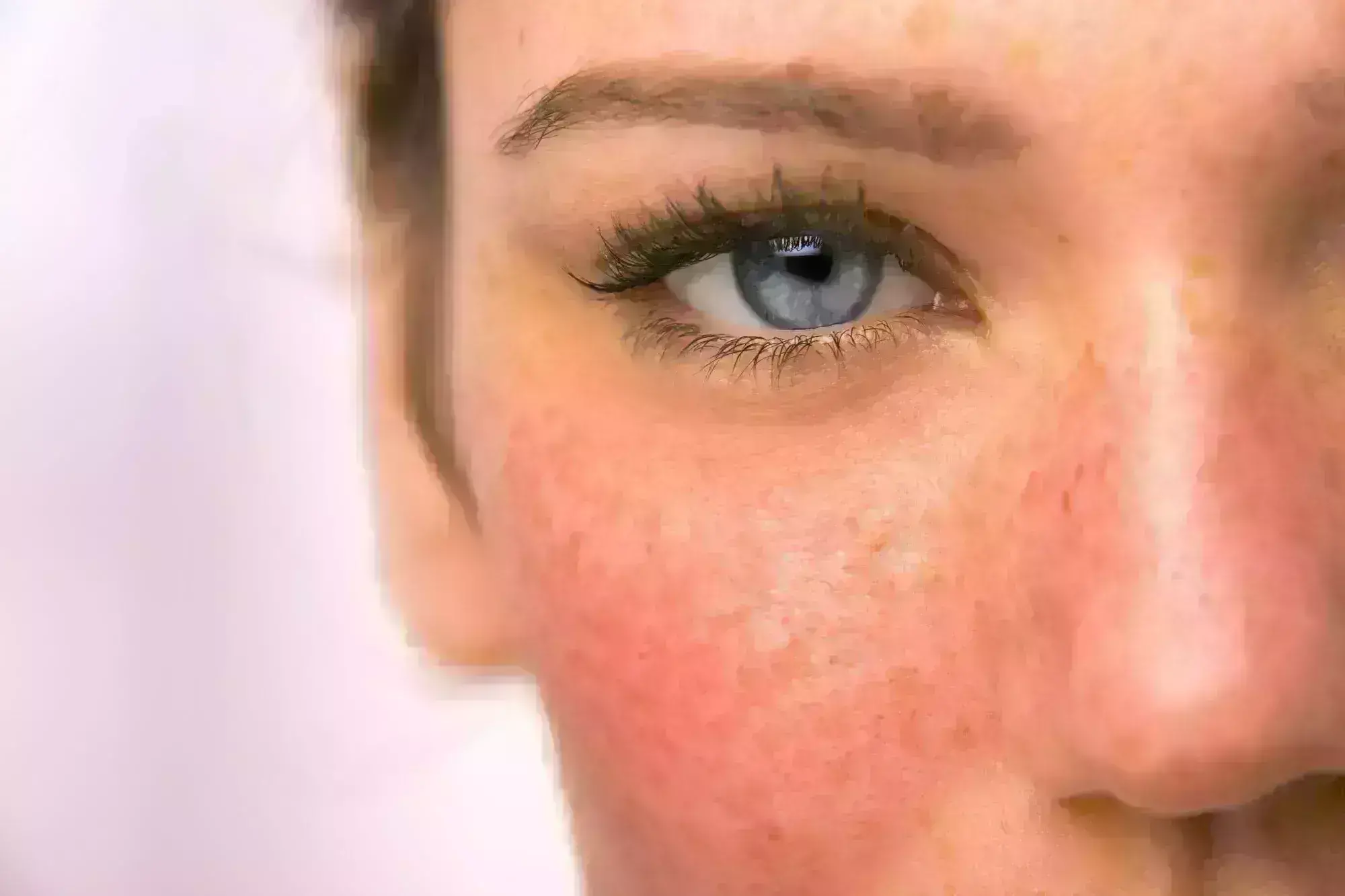taVNS Shows Promise as New Treatment for erythematotelangiectatic rosacea: JAMA
- byDoctor News Daily Team
- 15 October, 2025
- 0 Comments
- 0 Mins

A new clinical trial published in theJournal of the American Medical Associationfound concurrent transcutaneous auricular vagus nerve stimulation (taVNS) therapy to improve both skin symptoms and systemic comorbidities, indicating its potential as an effective treatment for erythematotelangiectatic rosacea (ETR). The trial from February 2024 to February 2025, involved 72 participants with moderate to severe ETR, identified by a Clinician’s Erythema Assessment (CEA) score of at least 2. The participants were randomly divided into 2 equal groups, where one received daily taVNS therapy, and the other underwent sham stimulation (SS), which mimicked the treatment but provided no actual nerve activation. The taVNS treatment delivered mild electrical pulses to the auricular branch of the vagus nerve, located in the ear, at a frequency of 30 Hz and pulse width of 200 microseconds for 30 minutes daily over 3 weeks. Both groups were monitored for an additional 24 weeks to assess long-term effects. After 3 weeks, the taVNS group showed marked improvements in facial erythema when compared to the control group. The average CEA score dropped from moderate to mild redness levels, with a mean score of 1.56 compared to 2.47 in the SS group (mean difference, −0.92; P < .001). This improvement in visible skin symptoms persisted through the 24-week follow-up period. Beyond dermatological improvements, the patients receiving taVNS also experienced notable reductions in anxiety and depression symptoms. The mean difference for anxiety scores was −5.42, and for depression, −6.22, both with strong statistical significance. These psychological benefits suggest that taVNS not only improves skin appearance but may also help alleviate some of the emotional burdens commonly associated with rosacea. Also, additional measures like sleep quality, fatigue, and migraine frequency, showed improvement among taVNS recipients, further highlighting the therapy’s potential holistic impact. Adverse events were rare and mild, occurring in only 2 patients (5.6%) in the taVNS group and 3 (8.3%) in the sham group. Overall, the findings of this study suggest that daily taVNS sessions can substantially reduce facial redness and improve quality of life for ETR patients, signaling a promising new direction for noninvasive rosacea treatment. Li, J., Wei, J., Zhang, M., Kong, M., Xie, L., Wan, M., Pan, Z., Tian, J., Ou, Z., Chen, S., Xia, A., Tang, L., Song, Z., Hou, J., & Hao, F. (2025). Transcutaneous auricular vagus nerve stimulation treatment for erythematotelangiectatic Rosacea: A randomized clinical trial: A randomized clinical trial. JAMA Dermatology (Chicago, Ill.).https://doi.org/10.1001/jamadermatol.2025.3796
Disclaimer: This website is designed for healthcare professionals and serves solely for informational purposes.
The content provided should not be interpreted as medical advice, diagnosis, treatment recommendations, prescriptions, or endorsements of specific medical practices. It is not a replacement for professional medical consultation or the expertise of a licensed healthcare provider.
Given the ever-evolving nature of medical science, we strive to keep our information accurate and up to date. However, we do not guarantee the completeness or accuracy of the content.
If you come across any inconsistencies, please reach out to us at
admin@doctornewsdaily.com.
We do not support or endorse medical opinions, treatments, or recommendations that contradict the advice of qualified healthcare professionals.
By using this website, you agree to our
Terms of Use,
Privacy Policy, and
Advertisement Policy.
For further details, please review our
Full Disclaimer.
Recent News
Air Pollution May Slow Infant Brain Development: S...
- 23 October, 2025
AI Outperforms Traditional Tools in Predicting Hea...
- 23 October, 2025
Nearly Half of Acute Pancreatitis Patients Develop...
- 23 October, 2025
Can Fat You Can’t See Put You at Risk for Stroke a...
- 23 October, 2025
Daily Newsletter
Get all the top stories from Blogs to keep track.


0 Comments
Post a comment
No comments yet. Be the first to comment!